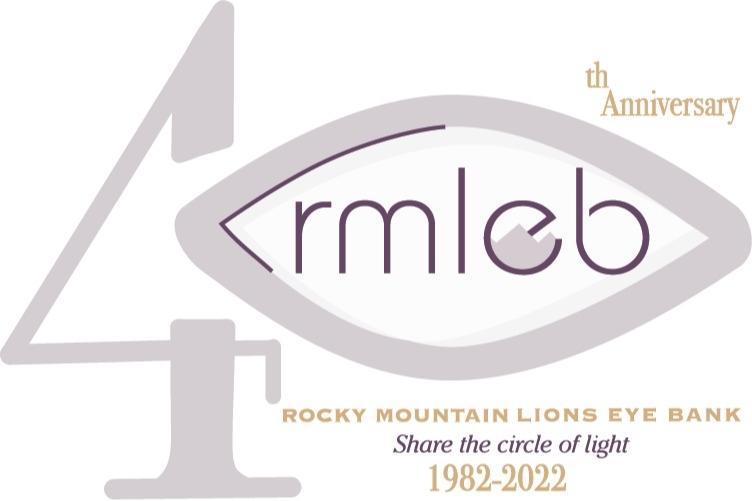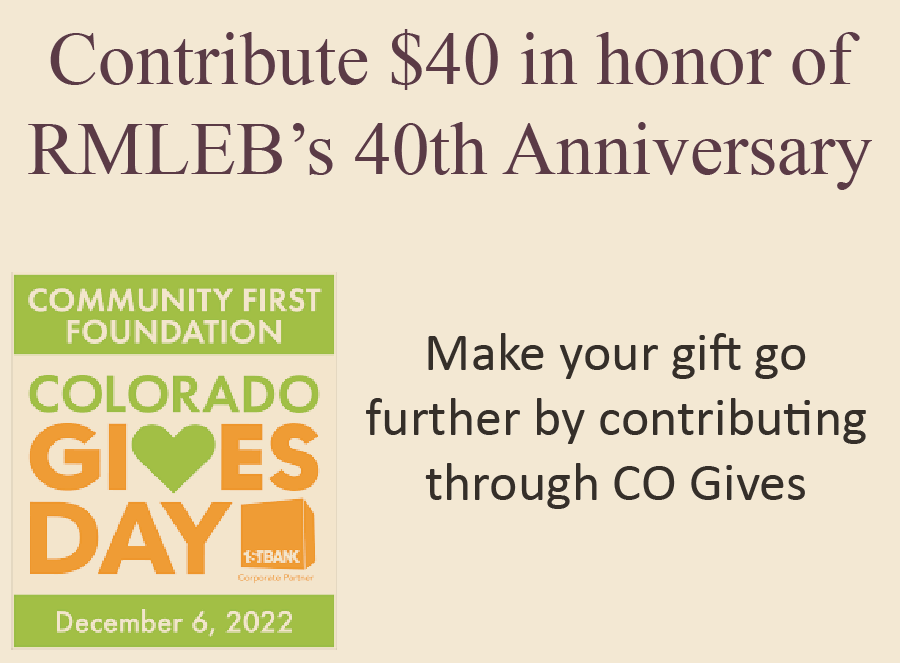Looking Back and Looking Forward
 We’ve been around for 40 years, but the changes in the past 10 have had a big impact on where we are today and where we’ll be in the future.
We’ve been around for 40 years, but the changes in the past 10 have had a big impact on where we are today and where we’ll be in the future.
The Rocky Mountain Lions Eye Bank has come a long way in its decades of service. As we celebrate 40 years of connecting donors’ gifts of sight to recipients to help them overcome blindness, it's a time to look back at where we’ve been and look forward to where we’re going.
We started back in 1982, founded as a joint effort by the Lions of Colorado and Wyoming. Dr. Marc Whitaker performed our first recovery four days after our founding on August 11. Since then we've pursued our mission to fulfill the wishes of eye donors and their families to help another overcome blindness through transplantation and research.
In our first three decades we became one of the top 10 eye banks in the U.S., expanded to serve international recipients and moved to our current location.
The Past 10 Years at RMLEB
“More has happened in the last 10 years than in the first 30,” said John Lohmeier, executive director of the eye bank. John has seen the changes at RMLEB firsthand, having started with us as a recovery technician 23 years ago. Though plenty has changed in the past 10 years, a few changes have had an outsized impact on us. For example, the shift to paperless documentation has been huge.
“When I first started, we would be waiting days and days to get paper charting from the hospitals,” explained Staci Terrin. Staci is the technical manager at the eye bank. Like John, she started as a recovery technician eight years ago.
But the shift to electronic documentation has made the whole process much smoother and shorter. Time is the biggest enemy to the viability of eye tissue for transplant. Anything that speeds up the process means more, better-quality tissues for surgeons and recipients.
Another change from the past 10 years was the addition of the Lion Jack and Christine Nisselius Eye Bank in April 2015, named in recognition of the couple’s generous financial contributions to the eye bank over the years.
Located a few miles from our office, the Annex serves as a recovery and processing facility. It is one of the most advanced eye bank processing facilities in the nation.
The Annex’s processing and recovery facilities gave us some much-needed room to do our work and increased our ability to connect a donor’s gift of sight to recipients to overcome blindness. Plus, the dedicated recovery space allows us to side-step som e of the issues we had had with recoveries at some locations.
e of the issues we had had with recoveries at some locations.
New Processes Mean New Ways to Share the Circle of Light
Another recent change that has allowed us to do more has been the advent of DSEK and DMEK processes. DSEK — descemet stripping automated endothelial keratoplasty — and DMEK — descemet membrane endothelial keratoplasty — are both processes that separate the cornea in different ways in preparation for different types of grafts.
“It’s splitting the cornea into layers,” John summarized. “That graft thickness is about 10-20 microns thick, so that’s about 1/5 of the thickness of a human hair.”
Surgeons have come to rely on the eye banks to separate the corneas into the layers that they need for the patient and their transplant. The end result is that transplant procedures are more successful and have better outcomes with fewer post-operative infections for the recipients.
The challenging, integral work of splitting the cornea to meet surgeons’ needs is one of Staci’s favorite tasks in her role at the eye bank.
“I feel connected to the surgeons and the recipients because I am playing such a critical role at that point,” she said. At that link in the chain from donor to recipient, everything is in the hands of our recovery team. Advances in especially DMEK over Staci’s years with the eye bank have made that link with surgeons stronger and more important.
“Since I first learned DMEK, there have been carrier devices that basically make the graft ready for the surgeons when it arrives to them in surgery. They have less prep in the OR, which is great for them. It's something our partner surgeons have really appreciated. We took than on and learned how to do it because it makes their process in the OR easier.”
The DSEK and DMEK processing has added roughly 33% to what the eye bank does and offers to surgeons and recipients. That processing didn’t exist 11 or 12 years ago, and it’s a huge advancement.
An Eye to the Future
John expects another similar technological advancement is coming in the next 10 years. But from a different technology.
“We’ll add a whole other layer to what the eye bank does in the future with laboratory cell culture and producing transplantable cells or cell grafts in the laboratory." Such technology could shift eye banking and corneal transplant to serving even more potential recipients than we do today. Instead of one cornea going to one donor, there's a possibility where cultured cells from one donor could help restore vision in several recipients.
Such a technological future will require a team that is both skilled and dedicated. Neither is an issue for RMLEB.
“One thing that has always stood out to me no matter what role I've had at the eye bank is it is such a humbling and great responsibility that we have to our community, our donors, our recipients,” Staci said. “It's very humbling to know that we get to play a small role in such a selfless act that one human gives to another. I’m very proud of the work we do here.”